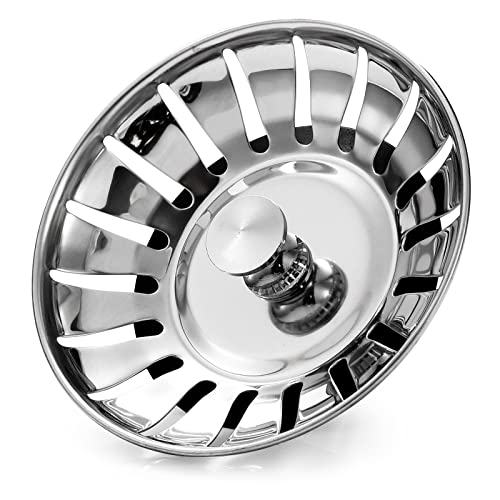What is the average lifespan of a sink strainer?
When it comes to sink strainers, the average lifespan can vary depending on various factors such as the material used, the frequency of use, and maintenance practices. Generally, sink strainers can last anywhere from a few months to several years before needing to be replaced.
Factors that affect the lifespan of a sink strainer
1. Material: Sink strainers are typically made from materials such as stainless steel, plastic, or brass. Stainless steel strainers tend to have a longer lifespan compared to plastic ones, as they are more durable and resistant to corrosion.
2. Usage: The frequency and intensity of use can also affect the lifespan of a sink strainer. If a sink strainer is used multiple times a day or for heavy-duty applications, it may wear out faster compared to one that is used less frequently or for lighter tasks.
3. Maintenance: Proper maintenance can significantly extend the lifespan of a sink strainer. Regular cleaning and removal of debris can help prevent clogging and reduce wear and tear on the strainer.
4. Water quality: The quality of water can also impact the lifespan of a sink strainer. Hard water, for example, can lead to the buildup of mineral deposits, which can affect the performance and durability of the strainer.
Signs that a sink strainer needs to be replaced
1. Drainage issues: If water is not flowing smoothly through the sink drain, it may be a sign that the strainer is clogged or worn out.
2. Rust or corrosion: If you notice rust or corrosion on the sink strainer, it may indicate that it is reaching the end of its lifespan. This is particularly common with plastic or low-quality metal strainers.
3. Broken or damaged parts: If any parts of the sink strainer, such as the basket or handle, are broken or damaged, it may be time to replace the strainer.
4. Persistent odors: If unpleasant odors persist even after cleaning the sink and drain, it could be a sign that the strainer is not functioning properly and needs to be replaced.
Tips to extend the lifespan of a sink strainer
1. Clean regularly: Regularly cleaning the sink strainer by removing debris and rinsing it with warm, soapy water can help prevent clogging and improve its lifespan.
2. Avoid abrasive cleaners: Using abrasive cleaners or brushes can scratch or damage the surface of the sink strainer. Stick to non-abrasive cleaning methods to prolong its lifespan.
3. Use a drain cover or stopper: Using a drain cover or stopper can help prevent larger debris, such as food particles or hair, from entering the sink strainer and causing clogs.
4. Address drainage issues promptly: If you notice any draining issues or signs of clogging, such as slow water flow, address them promptly to prevent further damage to the sink strainer.
5. Consider water softeners or filters: If you have hard water, installing a water softener or filter can help reduce mineral deposits and extend the lifespan of your sink strainer.
Where to buy a sink strainer
You can purchase sink strainers from various sources, including home improvement stores, kitchen supply stores, and online retailers. Some popular online retailers that offer a wide range of sink strainers include Amazon and Home Depot.
When buying a sink strainer, consider the material, size, and design that best suits your needs. It’s also important to read customer reviews and check the product specifications to ensure that you are choosing a high-quality and durable sink strainer.






